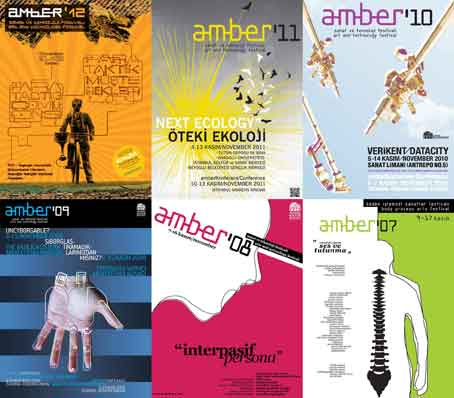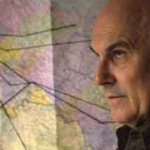#direngeziparkı #direndemokrasi (#resistforgezipark #resistfordemocracy)
I had thought that those who characterized the Tahrir square uprising in Egypt as facebook revolution were neglecting the primary dynamics of the event in favour of new media. I am in the field of new media and the conferences I have attended always looked at the subject from this angle and foregrounded the role of social media. Facebook graffiti on the streets of Cairo was noteworthy. Social media had an undeniable role in all this but I thought that the “facebook revolution” characterization was a kind of branding, a new form of orientalism.
Last week I changed my mind. I certainly cannot call what happened in Turkey as a facebook revolution but I have experienced how important and defining facebook and social media in general can be. Facebook graffiti in Cairo streets were in fact a tactic to try to draw people to social media. Tahrir square was the first social movement of this size where the effect of social media became so apparent.
In Istanbul nobody wrote facebook or twitter on walls. This was because these are ordinary and everyday communication tools for the youth on the streets. Everyone was aware. This is why social media was intensively used from the very beginning. Nobody will call what happened in Istanbul a facebook revolution because that first wave has already been overcome in Egypt. However, I feel obliged to say, is social media wasn’t there, we may well woken up to much darker mornings. The uprising would have been taken care of in a couple of days with excessive police violence, and the pain of injustice would have been planted in the bad memories of those hopeless souls who know what happened, and who are ostracized precisely because of this knowledge. Read more
Ekmel Ertan – #direngeziparkı #direndemokrasi – From The Billboards On The Streets
Park Life: Occupy Istanbul?
It was summed up in a tweet: this could be the Turkish Spring. The person was referring to a CNNturk broadcast, which finally had picked up the story of the past days of occupation of the Gezi park in Istanbul and the following police violence. A peaceful protest turned into widely circulating images of tear gas, facial injuries, and a range of police measures that anyone seeing the pictures could not see as proportionate, despite some government officials trying to dismiss the events. Some tweeters escorted their images of tear gas filled Taksim with a reminder: “this is not Middle East, this is Istanbul”.
The occupations had to do with a tactical colonialisation of both hashtag space and real lived urban space. The fit to purpose and inevitable hashtags had already paved the way on Twitter: #Occupygezi and #Occupytaksim signalled the connection to the widely known occupation of the Zuccotti Park in New York that spread as model for global reappropriations: occupation of public streets as a form of reclaiming the commons. Such occupations were never really only about that particular space, but also more abstract but as real features: protests against the logic of financial capitalism and their relation to the securitization of public space.
Jussi Parikka – Media Archaeology
Jussi Parrika is the director of the Cultures of the Digital Economy (CoDE) institute. His lecture Practicing Media Archaeology: Creative Methodologies for Remediation and Creation focuses on some ideas and examples from media archaeological art practice.
By visiting projects by prominent artists from Zoe Beloff to Paul Demarinis, as well as some more recent names, he aims to elaborate some ideas of how such media archaeological art is able to address questions of the “material”, temporality and nature. As such, the projects are themselves excellent articulations of some of the challenges media archaeology faces in terms of developing itself as an innovative approach to digital culture – practically and theoretically.
From: http://medea.mah.se/2011/05/jussi-parikka-on-media-archaeology/
Brief History Of New Media Art In Turkey
 The new media scene in Turkey can be viewed parallel to the establishment of Visual Communication Design (VCD) departments at universities, which goes back to the end of the 1990s. In 1996 private universities founded earliest VCD departments. Yıldız Technical University is the first state university that started such a program, as well as the first master and doctoral degree program in the field. A pioneer in this field, Bilgi University’s VCD department started organizing annual student work exhibits in 2001. These exhibits created a broader awareness of digital technologies. The opening of VCD departments in public and private universities has led to an increased interest in screen based digital media in the last decade. At present there are roughly 170 universities in Turkey, about 45 of them in İstanbul and many of them have a VCD or similar program.
The new media scene in Turkey can be viewed parallel to the establishment of Visual Communication Design (VCD) departments at universities, which goes back to the end of the 1990s. In 1996 private universities founded earliest VCD departments. Yıldız Technical University is the first state university that started such a program, as well as the first master and doctoral degree program in the field. A pioneer in this field, Bilgi University’s VCD department started organizing annual student work exhibits in 2001. These exhibits created a broader awareness of digital technologies. The opening of VCD departments in public and private universities has led to an increased interest in screen based digital media in the last decade. At present there are roughly 170 universities in Turkey, about 45 of them in İstanbul and many of them have a VCD or similar program.
There is not (yet) a department or program solely dedicated to new media in any art faculty of any Turkish university. For the most part, art education still follows a conventional art educational practice, although there seems to be a gradual shift towards conceptual artworks created with different media – even within more conservative institutions such as the Faculty of Fine Arts at Mimar Sinan and Marmara University.
Screen-based interaction has been in the curriculums of all programs from the beginning. But the first course to go beyond screen-based interaction and towards spatial and tangible interfaces in terms of design and art, was offered only recently in 2005 at Bilgi University – and it was actually by me. (I still continue to teach this course at Sabancı University). In 2005, Elif Ayiter and Selim Balcısoy started a multi-disciplinary course at Sabancı University. This course focused on the collaborative work of design and engineering students. Koray Tahiroğlu, a musician who was educated abroad, started similar courses in the Music Department at Bilgi University. In 2008 the students presented their interactive compositions in a club. This was the first event of its kind in Turkey. Read more
Amber ’10 Art and Technology Festival, Istanbul, Turkey
dancetechtv
WORLDGRIDLAB production team
Asli Yilmazturk







